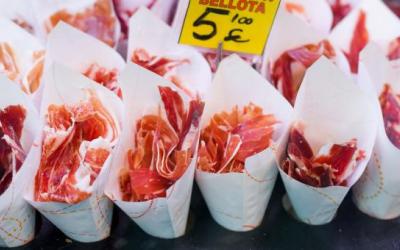Current situation in the Ecuadorian pig sector: self-sufficiency and expansion

This growth is driven by significant progress over the past 15 years, with production increasing from 95,000 tonnes in 2010 to over 222,000 tonnes in 2024 , an increase of 134% and an average annual growth rate of 6.3%. In 2024, Ecuador's pork production increased by about 5%, compared to 213,000 tonnes in 2023, with about 2.76 million pigs slaughtered.
The current national pig population is estimated at 2.8 million HEAD, including 129,000 breeding females. Of these, 79,000 are backyard sows and 50,000 are from intensive systems, representing a 39% intensification rate. Ecuador has 166,000 pork producers, 94% of whom are smallholders. The country’s five largest pig companies own nearly 40% of the country’s commercial breeding sows, with Pronaca leading the way with 12,000 sows.
According to Agriness, Ecuador boasts high production figures with a farrowing rate of 84.14%, total piglets born per litter of 14.06, 2.34 litters per sow per year, and 27.94 weaned piglets per sow per year, putting it on par with regional competitors such as Colombia, Argentina, and Paraguay.
Ecuador is self-sufficient in meeting domestic demand for pork. Over the past decade, imports have fallen by almost 70%, and 97% of the 230,000 tons of apparent consumption in 2024 came from domestic production, with only 3% from imports. Along with the increase in production, per capita pork consumption has increased, reaching 12 kg/person/year in 2024.
According to the Ecuadorian Association of Balanced Feed Producers (Aprobal), 1,186,654 tons of pig feed were produced in 2024, up 3.3% from 2023 (1,148,897 tons). About 600,000 tons of domestic corn were used to produce the feed, as the central government prioritizes local grain production and strictly controls imports. Pronaca is the leading feed producer, accounting for about 30% of national production (366,000 tons), followed by other key companies such as Molinos Champion, Alimentsa SA, Balanceados Nova SA (Balnova), Avipaz Cia. Ltda. and Bioalimentar Cia. Ltda.
The outlook for Ecuador’s pork industry is promising. Pork production is expected to reach 280,000 tonnes by 2030, up 25% from 2024, with domestic consumption also set to increase significantly. The sector has also made its first moves into EXPORT markets, with pork set to arrive in Ivory Coast in 2023 and Vietnam in 2024, paving the way for further expansion into international markets.
Read together with it:
- Боливия экспортирует говядину на сумму 797 миллионов долларов и вводит новые цифровые сертификаты для внешней торговлиЭкспорт говядины из Боливии в период с 2021 по 2025 год достиг 797 миллионов долларов. Китай является основным рынком сбыта этого мяса, на который приходится 74% продаж, сообщила Карина Серрудо, генеральный директор Национального таможенного управления. Параллельно с этим ведомство включило сертификат безопасности экспортных пищевых продуктов для говядины в систему «Единое окно для внешней торговл...
- Поголовье свиней в Бразилии продолжает растиТакже наблюдался рост убоя свиней на 1,2%, достигнув рекордного уровня в 2024 году, хотя рост сектора замедлился. Экспорт свинины также достиг исторического максимума. По географическому распределению Толедо (штат Парана) сохранил лидерство по производству свинины среди 5487 муниципалитетов, где ведётся свиноводство, на долю которого приходится 2,2% от общего поголовья (95......


























































